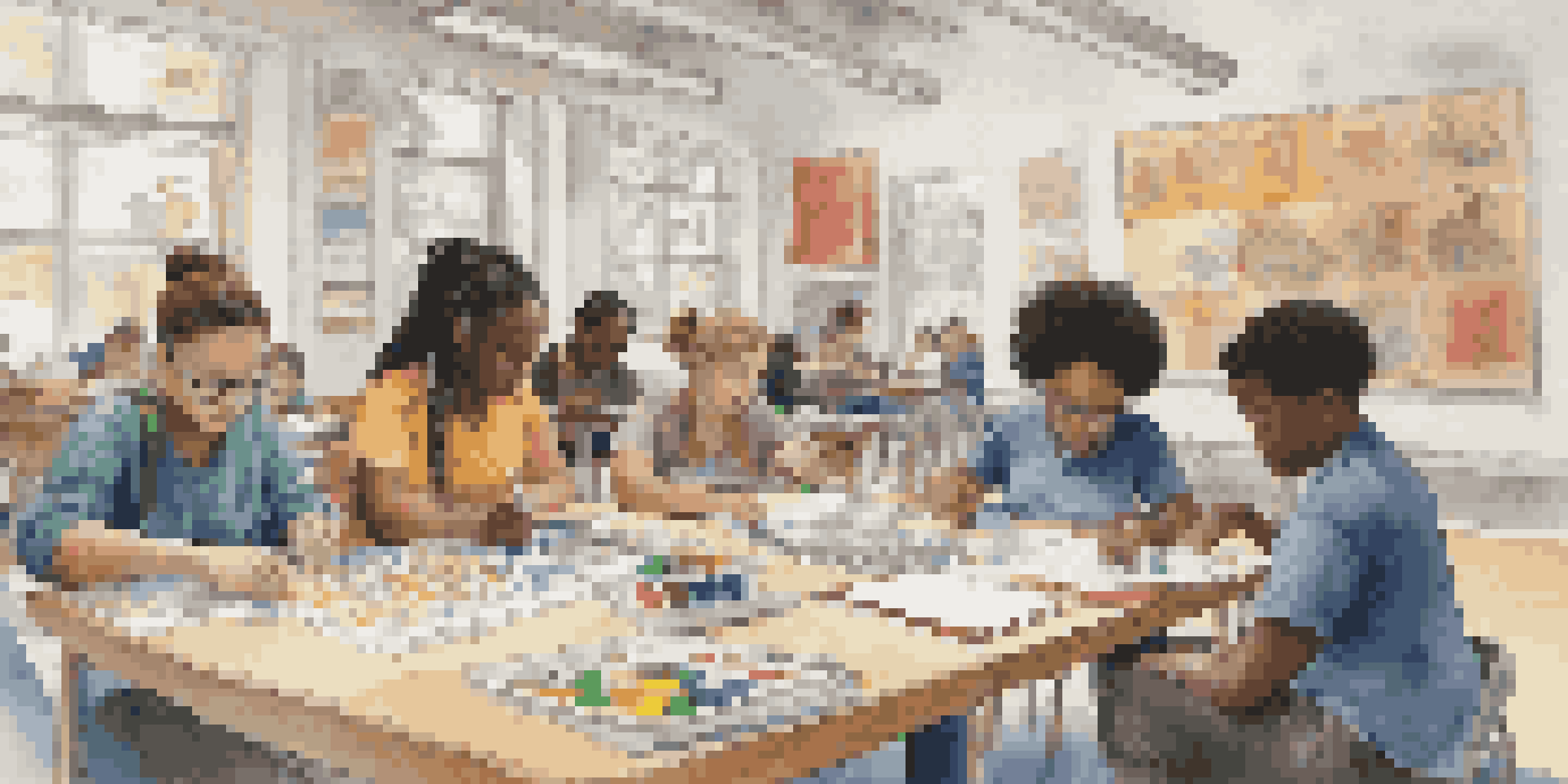Strategies for Implementing Culturally Relevant Group Work

Understanding the Importance of Cultural Relevance
Culturally relevant group work is essential for fostering inclusivity and engagement. When participants feel that their backgrounds and experiences are acknowledged, they're more likely to contribute meaningfully. It creates a sense of belonging that can enhance collaboration and learning outcomes.
Diversity is not about how we differ. Diversity is about embracing one another's uniqueness.
Consider a classroom where diverse cultural perspectives are celebrated. This not only enriches discussions but also encourages students to share their unique viewpoints. By valuing each individual's culture, we pave the way for deeper understanding and respect among group members.
Incorporating cultural relevance into group work isn't just a nice-to-have; it's a necessity. It helps dismantle barriers and promotes equity, allowing all voices to be heard and respected. This approach ultimately leads to more innovative solutions and stronger relationships within the group.
Assessing Group Members' Cultural Backgrounds
Before starting any group work, it's important to assess the cultural backgrounds of participants. This can be done through surveys, discussions, or informal check-ins. Understanding where everyone comes from sets the stage for meaningful interactions.

For example, in a workplace setting, knowing your colleagues’ cultural backgrounds can help in assigning roles that play to their strengths. Some may thrive in leadership positions, while others excel in collaborative tasks. By aligning responsibilities with cultural contexts, everyone feels valued and motivated.
Cultural Relevance Boosts Engagement
Acknowledging diverse backgrounds fosters inclusivity and enhances collaboration among group members.
Moreover, this assessment can reveal commonalities and differences that might influence group dynamics. Acknowledging these aspects allows for tailored approaches that cater to the unique needs of the group, enhancing the overall experience.
Creating a Safe and Inclusive Environment
A safe and inclusive environment is crucial for effective group work. It encourages participants to express their thoughts and feelings without fear of judgment. Leaders can foster this atmosphere by establishing ground rules that promote respect and openness.
In diversity, there is beauty and there is strength.
For instance, starting with icebreakers that celebrate diverse cultures can help set the tone. This not only warms up the group but also emphasizes the importance of each member’s background. Such activities can break down initial barriers and build camaraderie.
When participants feel safe, they're more likely to take risks and share their ideas. This can lead to richer discussions and more creative outcomes. Ultimately, a supportive environment nurtures trust and collaboration among group members.
Incorporating Diverse Perspectives in Group Tasks
Incorporating diverse perspectives into group tasks can significantly enhance creativity and problem-solving. When individuals bring their unique viewpoints to the table, it can lead to innovative solutions that might not have been considered otherwise. This diversity acts as a catalyst for rich discussions and deeper analysis.
For example, in a project focused on community outreach, including voices from different cultural backgrounds ensures that the approach is holistic and effective. Each group member can contribute insights that resonate with their communities, making the project more relevant and impactful.
Assess Cultural Backgrounds First
Understanding participants' cultural backgrounds sets the stage for meaningful interactions and tailored approaches.
Encouraging members to share their experiences related to the task can also stimulate critical thinking. This practice not only values individual contributions but also enriches the group’s overall knowledge and understanding of the topic at hand.
Utilizing Culturally Relevant Materials and Resources
Using culturally relevant materials and resources can enhance the learning experience in group work. These resources should reflect the diverse backgrounds of participants, making the content relatable and engaging. This approach not only fosters interest but also validates the experiences of all group members.
For example, incorporating literature, case studies, or examples from various cultures can make discussions more lively and informative. It allows group members to connect theoretical concepts to real-world experiences that resonate with them.
Additionally, providing access to resources in multiple languages or formats can further support inclusivity. This ensures that all participants can engage with the material, regardless of their language proficiency or learning style.
Encouraging Open Dialogue and Feedback
Open dialogue and feedback are essential components of culturally relevant group work. Creating an atmosphere where participants feel comfortable sharing their thoughts encourages continuous learning and adaptation. Leaders should actively seek feedback on the group process to ensure everyone’s voice is heard.
For instance, using anonymous surveys or suggestion boxes can help gather honest opinions about the group's dynamics. This feedback can then be used to make necessary adjustments, ensuring that the group remains inclusive and responsive to its members’ needs.
Open Dialogue Drives Continuous Learning
Encouraging open communication and feedback creates an inclusive atmosphere that values each member's contributions.
Moreover, regular check-ins can foster a culture of open communication. This not only strengthens relationships but also reinforces the value of each member’s contributions, making everyone feel invested in the group’s success.
Evaluating the Effectiveness of Group Work Strategies
Evaluating the effectiveness of implemented strategies is crucial for continuous improvement. After each group project, take the time to reflect on what worked well and what could be enhanced. This evaluation process should involve all group members to gain a comprehensive understanding of their experiences.
For example, consider using a rubric that assesses various aspects of the group work, such as participation, communication, and cultural inclusivity. This can provide valuable insights into how well the strategies are being executed and where adjustments may be needed.

Additionally, celebrating successes and acknowledging areas for growth can motivate group members. This not only reinforces positive behaviors but also fosters a culture of accountability and shared responsibility for the group’s outcomes.